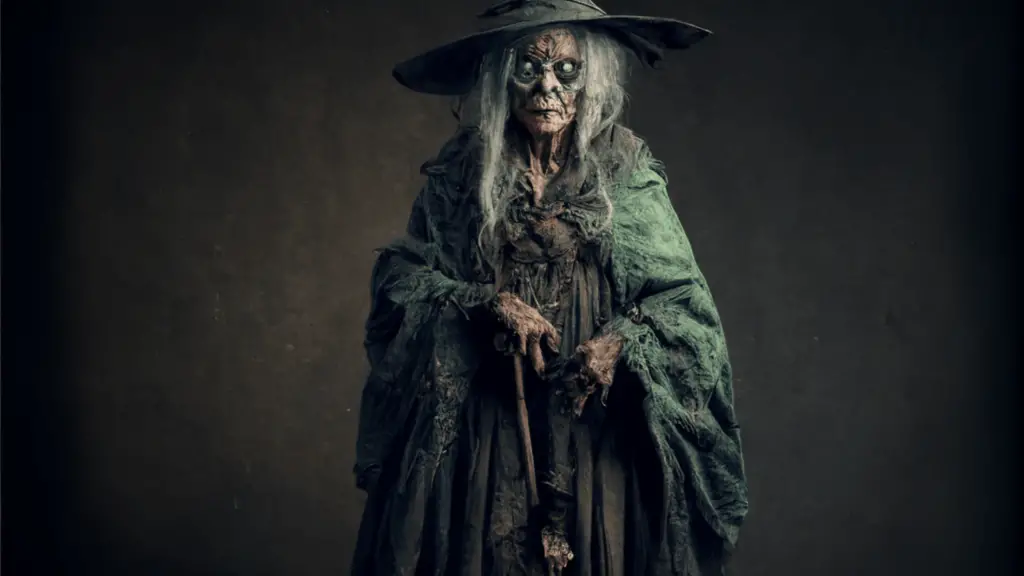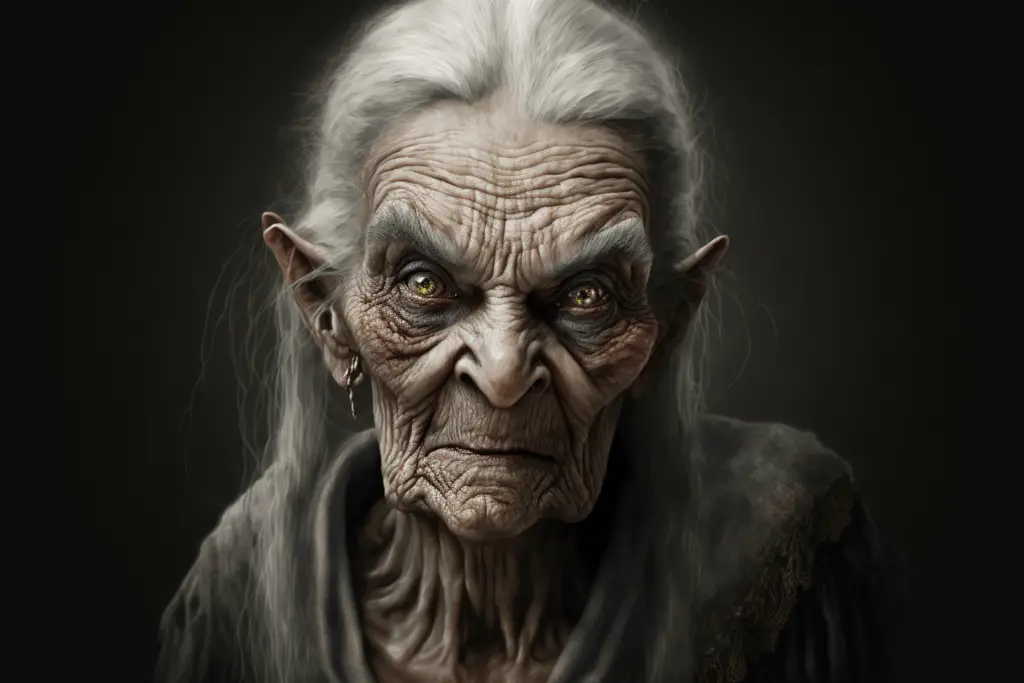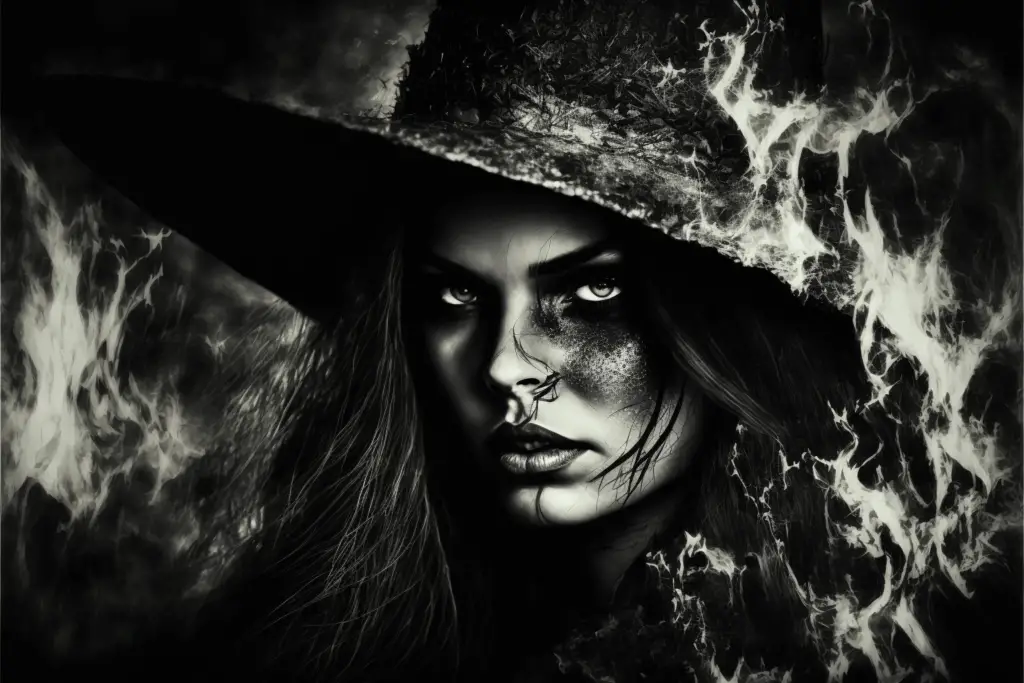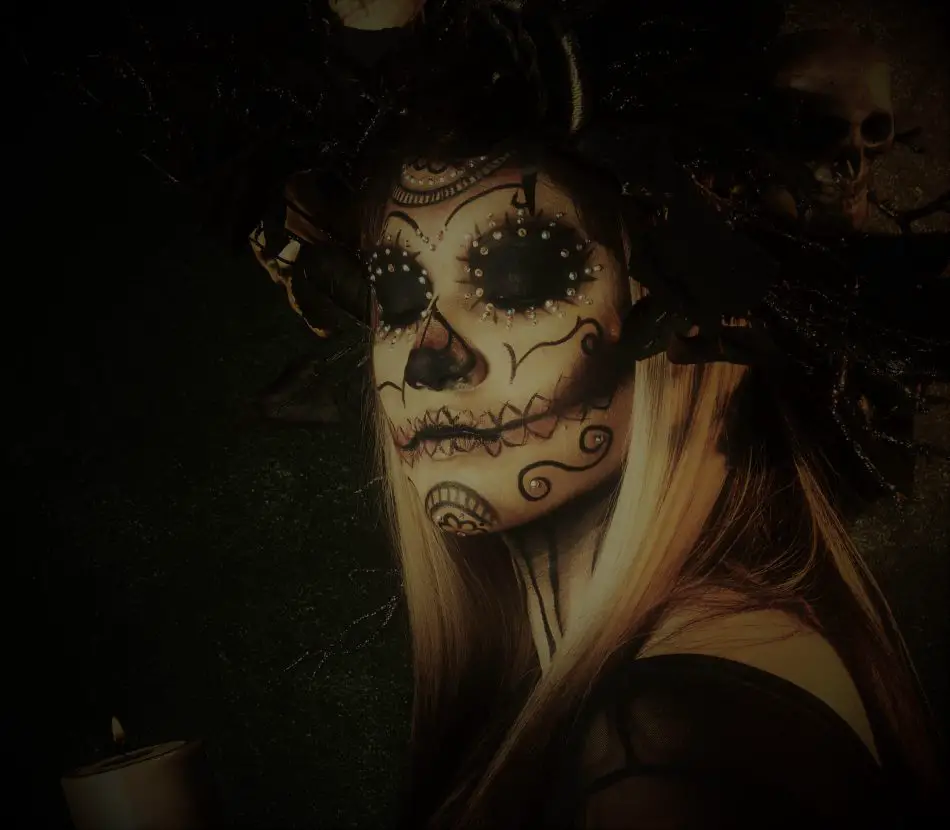Share the Lore!
By: Alex Postrado
The Origin of Folklore’s Most Wanted Villain
Fairy tales have a wide variety of stock characters.
These are the fictional types of individuals that audiences tend to recognize easily due to both their recurring appearance and — of course — their stereotypical attributes.
Samples of these range from lead characters — such as the romantic Prince Charming, the Chosen One, and the Damsel in Distress — to villainous creatures — in the shape of Ogres, the Ugly Sisters, and, who could forget, the archetypal Hag.
We’ve all seen her, sown in myths and legends all over the world.
She is the repulsive old woman, lurking in the woods. Believed to practice witchcraft or — at times — even the work of the devil, himself.
Perhaps the quintessential antagonist in folk stories, the Hag has — for years — saved authors the time and effort needed to get their narrative going.
In return, however, she has become this flat and oversimplified character, living only in clichés that fail to portray the rich history behind her existence.
Emanating from primitive beliefs in gods and goddesses, how exactly did the Hag transform into the worn-out literary foe, as well as Dungeons and Dragons‘ wicked witch of the Feywild, known today?

Meet the Hag
The story of Hansel and Gretel features a cannibalistic old witch who lures children into her house made of pastries.
In German composer Engelbert Humperdinck’s 1892 opera, this witch was given the name Rosina Leckermaul — meaning, “Raisin Sweet-tooth“. But several versions of the classic tale call her the Gingerbread Hag.
She is one of the most recognized hags in folklore. And over time, we’ve seen her set off countless different renderings in films, animated shows, and books.
But the idea of wizened witches did not start with the Gingerbread Hag.
In fact, the term hag had already appeared in Middle English, in the form of hagge — meaning, “demon” or “old woman“. A word that was probably a shortening of Old English hægtesse or hegtes — meaning, “witch” — from Dutch heks — an unpleasant woman with a violent temper and a sharp tongue.
According to the lore, hags are old, ugly, and malicious witches, “said to be aligned with the devil or the dead”.
Their distinguishing features would include long crooked noses, warts, and rotten teeth. However, you must not fall victim to their outside appearance!
Despite looking as if they’re not long for this world, hags are largely immortal creatures that are exceptionally intelligent and surprisingly agile for their physique.
No wonder they make for the standard enemy in cultural tales!
Since then, hags persistently materialized in oral tradition and folklore, ultimately paving the way for a brand new take on her name.
The Era of the Old Hag
In North American folklore, the Old Hag is a vicious spirit that comes out in the night to torment its victim by riding on their chest and preventing them to breathe.
Closely related to Germanic lore’s malicious entity called mare or mara, this variety of night hag provided us the ancient explanation for what we call today “nightmares”.
Interestingly, this wasn’t the only rendering of hags that survived the years.
Baba Yaga of Slavic folklore, the Three Fates of Greek myth, the Philippines’ Batibat, and sometimes, even Lilith of the Torah, are all considered variations of the traditional Hag.
And at present — all thanks to the role-playing game, Dungeons & Dragons — there are a lot more types of hags the average person would probably recognize.
Care to know each one of them?
Evil D&D Witches?
The fantasy tabletop role-playing game, Dungeons & Dragons, has been amusing players since 1974.
Designed by Ernest Gary Gygax and Dave Arneson, the game gave rise to a medieval fantasy world, home to monsters and other supernatural entities — with the hags being some of them.
Hags are some of the cruelest, yet most underrated, creatures in Dungeons & Dragons.
They are evil to the core, masters of manipulation, and basically, an embodiment of being ugly both inside and out.

In the game, they’re known to be impossibly old witches, with “lifespans that reach well beyond that of elves and dragons.”
Grandmothers are the oldest, most clever, and most powerful hags in D&D.
Though these witches highly prefer working alone, they would also take in other hags from time to time — those referred to as aunties — to form a coven of three.
When this happens, the trio would gain newfound access to forbidden knowledge, in addition to even more potent magic, making them twice as dangerous and fearsome than they would be alone.
But if it’s fear we are talking about, which species of hags should you want to steer clear of?
The Ultimate Hag Species Breakdown
In 1975, Sea Hags made D&D history as the first species of hags to come into sight.
While the name suggests that they tend to live by the water, Sea Hags are actually amphibious by nature.
They are notorious for being the ugliest species of their kind. And with that, they are unable to disguise themselves into anything else, besides a very ugly humanoid — making them the weakest species to boot.
Annis Hags, on the other hand, are believed to be the most powerful.
These tall, dark creatures can disguise themselves “as either innocent commoners or timid young female giants” to trick their victims before jumping in and tearing them to shreds with only their bare hands.
Night Hags are considered the vilest of all D&D hags. In fact, so much so, that they were banished from the Feywild.
They can be compared to succubi and incubi because they, too, seek to reproduce by mating with mortal humanoids. And unlike other species, they can fully put on a humanoid guise, allowing them to skillfully deceive their prey.
Meanwhile, Green Hags rely on illusions. They possess a wide range of magical abilities, which lets them either turn invisible, speak any language, or even physically mimic beautiful women to tempt naive victims.
Bheur Hags — also called Winter Hags — “live for the pleasure of bringing icy doom to as many people as they can“. A theory says that only one Bheur Hag exists since “no more than one has been seen at a time”, but it is also possible that they are just highly solitary creatures.
Death Hags are the rulers of all the undead. Zombies, skeletons — you name it!
They are relatively new to the D&D world, as compared to other hag species, but these necromancy-focused hags — for sure — aren’t those you can easily brush off.
Shrieking Hags roam the wastelands with an ear-splitting scream. To them, there is nothing more pleasurable than driving their victims to madness through their vexing wails.
As for Dune Hags, however, mental enslavement is the way to go.
Posing as beautiful desert princesses, these creatures will try to kiss their target in order to hold them in a hypnotic trance. If caught in the scheme, they will immediately flee, but not without kissing at least one victim.
There are several more hag species in the D&D world. With some — like the Crimson Hag, the Howling Hag, the Eldritch Hag, and the Feral Hag — only being added to the bunch in recent years.
But — if you noticed — despite the diversity of the hags in Dungeons and Dragons, there’s one dominant thing that ties them all together.
And you’ve guessed it — being all villainous and diabolic.
But are hags truly the rotten crones they are mostly made out to be?

The Truth: Are Hags Really Evil?
These days, witches are often regarded as feminist icons. A way for women to reclaim the power to decide who they should be in this world, moreover, what they should do.
But in the past — especially during the Middle Ages — women who either threaten or reject the hetero-patriarchal order weren’t given the same liberty that they now have to fully express themselves.
Instead, they were vilified.
The truth is, some hags may be wrinkly from old age, but they were traditionally seen as elemental goddesses who were neither benevolent nor malevolent per se.
Basically “the antithesis of fertility“, the belief in them was rooted in paganism.
But when Christianity and the concept of patriarchy began to spread, hags were increasingly portrayed as evil witches, rather than the primitive nature spirits they originally were.
Still more bothering is the fact that this ploy has been rampant all throughout our history.
Most cultures that introduced the lore of the Hag were riddled with misogynistic values that only want young, beautiful, and submissive women they could train to do their housework.
You give them an aging female body — “non-reproductive and anti-family” — or someone headstrong, smart, and powerful, and probably even aware of her sexuality — then they’ll give you the Hag.
The crone. The ugly, old witch.
So, to answer the burning question: no, hags — by their intrinsic nature — aren’t evil.
Older and wiser women aren’t horrible.
Perhaps, what’s truly wicked is the need to taint the image of someone else just because they tapped the primal fears you are simply not ready to face.
And while the idea that old women are scary is presently deep-seated in the horror genre, culture is shifting.
And it’s not long before a new season of the witch finally dawns.
References:
The Witch (Hansel & Gretel) The definition of hag Hag (folklore) The Old Hag - Myths and Lore Dungeons & Dragons A Guide to Hags: The Wicked Witches of D&D Hag - Forgotten Realms Hags (D&D) Hag Tactics New Monsters & Spells: Elemental Hags New Monsters: More Horrific Hags Hag, temptress or feminist icon? The witch in popular culture Hag Witches and Women’s Liberation: Negotiations of Feminist Excess in the U.S. Horror Film, 1968-1972 The Crone Archetype: W chetype: Women Reclaim Their A omen Reclaim Their Authentic Self b uthentic Self by Resonating with Crone Images

